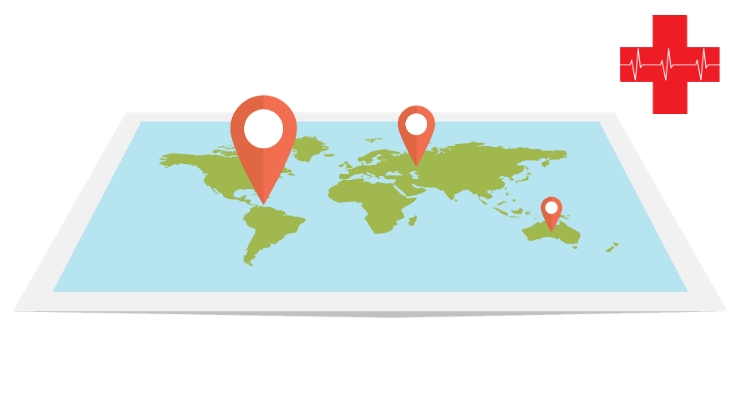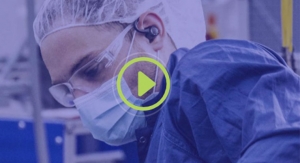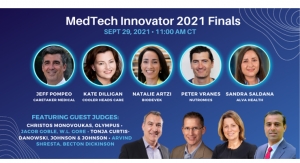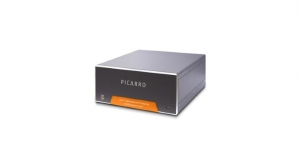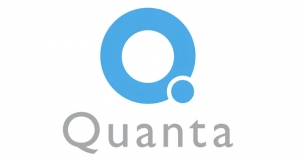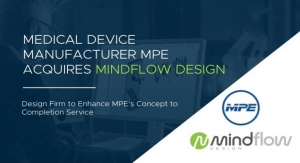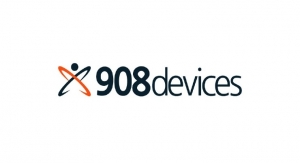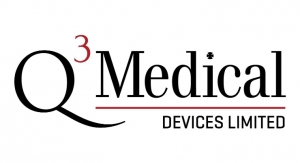Ofer Tirosh, CEO of Tomedes12.11.19
The medical device industry depends on medical translation services to make their products accessible to global markets. Translation, in general, is needed by all global businesses to penetrate foreign markets. Global businesses may also request professional localization services to significantly enhance their products and content’s local relevance. Businesses are not required to localize, but opt to anyway, to be one step ahead of their competition.
This is not exactly the case in the medical device industry, which works somewhat differently from other global businesses. In this article, you’ll get to know how different the context of localization is under the medical device industry and why medical device companies cannot export to other markets without localizing their products.
What Is Medical Translation?
Medical translation involves translating medical documents. Although translation and interpretation are often used interchangeably, they’re both very different. Medical interpreters deal with live language translation, while medical translators deal with paperwork.
Medical translation services are often requested by medical tourists and domestic patients that do not speak the local language very well. They are required to have all of their health records and relevant documents translated.
This is for the benefit of both the patient and healthcare professional, ensuring that any diagnosis and treatment is based off of accurate information. Any mistranslation could result in the wrong diagnosis, wrong treatment, and in extreme circumstances, the patient’s death.
Medical device companies are also clients of medical translation services. They have documents that need translation namely: marketing materials, labeling, product descriptions, manuals, software, etc.
Medical devices in this article’s context include everything from complex life support machines, pacemakers, and dialysis machines, to simple medical equipment such as syringes, tongue depressors, and latex gloves. As with any other exports, medical devices need to be translated to the target market’s native language, but translation is only one of the numerous criteria that medical device companies need to comply with.
Professional Translation Agencies
Since medical translation is an extremely delicate form of translation, medical device companies can only rely on trusted vendors. This is where professional translation agencies come into the picture. Professional translation agencies work with translators with native language skills, some with their own specializations; medical translation included. Medical device companies regularly tap into professional translation agencies and other relevant language service providers.
Because of their vast global network of translators, they can easily form a team for high-volume projects that medical device companies regularly commission. In short, medical device companies need to routinely rely on proven vendors that can not only guarantee quality but also have the capacity to handle high-volume projects.
On top of translation services, professional translation services also offer localization services. Localization is the process of adapting content for the target audience/market. A good general localization strategy involves incorporating factors relevant to your target audience/market. Depending on the product and business, these factors include their native language, consumer preferences, aesthetic choices (ex. color), etc.
Every global business needs a good localization strategy to successfully market their products, content, and services to other countries. But medical devices aren’t your average consumer goods. Medical device localization is done in a different manner.
Can Any Professional Translator Do Medical Translation Work?
Medical device translation can only be done by certified medical translators. Having stellar language and translation skills is just one requirement to be a medical translator. Even with years of experience, no professional translator is legally allowed to do medical translation work until they have gone extra training and earned the right certification in their language specialization of choice.
Potential medical translators need to complete a specific set of hours in approved training programs. There, trainees will be bombarded with vast medical terminology, medical code of ethics, healthcare regulations, and more. This is why many professional translators rarely specialize in medical translation.
Having medical experience beforehand is usually not required, but it is very useful indeed compared to someone with no medical experience or at the very least, exposure to medical terminology. With enough study and training, a professional translator can certainly become a fully certified medical translator.
To sum it up, medical device companies simply can’t pull out a freelance translator online and have her/him translate the manuals of a dialysis machine. Although it falls under the scope of technical document translation, the inclusion of medical terminology means that only medical translators are both suited and legally allowed for the job.
Why Medical Devices Are Required to Undergo Localization
Even though medical translation is as complex and comprehensive as it gets, it’s still only part of process as mentioned earlier. Indeed, medical devices don’t exactly fit into the category of common consumer goods, but that doesn’t mean that medical device companies can do away with localization.
Localization can be done in many forms, but in this context, localizing medical devices is done by strictly complying with the target market’s regulations and quality assurance standards on medical devices.
Unlike other industries that utilize localization to improve their product success and content relevance, the medical device industry can’t regard localization as something supplementary. Standards on medical device translation and localization involve nearly endless proofreading, quality assurance testing, linguistic validation, etc.
For example, if the medical device comes with integrated software, then its language and user interface (UI) have to be translated to the native language. It then has to be subsequently localized through highly stringent linguistic validation and quality assurance testing to ensure that every translation and UI configuration complies with both the industry and target market’s approved standards.
These strict standards exist since any mistranslation down to the punctuations and decimal points might entail dire and even fatal consequences.
International Standards and National Regulations
The medical device industry is a tightly regulated industry. Medical device manufacturers simply can’t market and export to whichever markets they wish compared to common electronics and consumer goods companies. After all, a heart monitor sensor is totally different from smartphones and televisions. When human lives are at stake, it’s only natural that such products are heavily regulated.
Each country has their own regulations for imported medical devices. This what makes medical device localization uniquely challenging. These regulations cover everything from manufacturing standards, safety standards, sanitation standards, UI quality assurance testing, linguistic validation, clinical testing, and more.
A. ISO Certifications
To establish themselves as not only experienced but also qualified vendors of medical device translation and localization services, professional translators agencies commonly display their acquired ISO certifications loud and proud. Common ISO certifications include ISO 9001, ISO 17100, ISO 10993, ISO 13485, etc.
B. U.S.A.
The U.S.’s Food and Drug Administration is responsible for laying out the regulations on medical devices. The FDA categorizes devices according to class (Class I, Class II, Class III, Class IV). As the class ascends, the regulations become stricter. Class I comprises of low-risk devices such as tongue depressors while Class IV are high-risk devices featuring critical life-support functions.
C. European Union
The E.U.’s regulations mimics the U.S.’ in terms of categorizing devices to corresponding classes. After years of stagnation, the EU’s recently rolled out new regulations on medical devices. It updated its Medical Device Regulation (MDR) in 2017. The updated In-Vitro Device Regulation (IVDR) will be effective in 2022.
These new regulations also require all medical device companies to translate their products to all languages of the European Member states. This means a medical device company based in the U.K. or Ireland will have to translate their products from English to Spanish, English to German, English to France, etc. and even English to Maltese and English to Croatian.
The reason why the U.S. and E.U. were singled out of all the countries is that they’re home to largest medical device companies. The U.S. claims world titleholder as the largest medical device manufacturer and medical device market. However, more countries are coming into the fore.
Why Medical Device Companies Need Translation and Localization Services
As stated earlier, countries and economic regions (E.U. specifically) regularly update their regulations on medical device manufacturing and importation. This however makes it exponentially harder for medical device companies. Let’s take a look at the E.U.’s updated regulations for us to get a clearer perspective from their end.
The E.U.’s announcement of the MDR and IVDR means that medical companies based in the E.U. and those that are currently exporting to the E.U. are all scrambling to comply with the new regulations as fast as possible before they become fully in-effect. You have to remember that their inventory number is a few dozen to hundreds of medical devices.
Depending on the device, some come with manuals and relevant documents that are hundreds to thousands of pages long, including software. Multiply that by dozens to hundreds of products and you can see the immense hurdle that medical device companies have to face. While big-name brands such as Siemens and Phillips have the resources to comply with the EU's new regulations, smaller medical device companies aren’t so lucky.
Be that as it may, this presents a major opportunity to professional translation agencies and language vendors offering medical translation services. Medical device companies, both large and small, will be needing translation agencies and localization companies more than ever if they want to continue operating in the E.U.
Additionally, more medical device companies coming from competitive countries such as China and India are now entering the market. Naturally, they have their own regulations but will inevitably have to conform to international standards. China in particular is a relatively new but emerging exporter of medical devices.
If a Chinese medical device company wants to export to the EU and English speaking markets (U.S.A., Ireland, U.K., Australia), then they inevitably will have to comply with the target market’s regulations. This includes providing Chinese to English translations.
Protecting the Welfare of Developing Countries: Final Takeaway
Although complying with regulations is a hassle, it is done to ensure that medical devices are manufactured with the utmost quality with patient safety and well-being in-mind. That being said, these regulations set the ground for the future of the medical device industry. Late comers in the market are given little to no room to develop sub-standard products and export it to developing countries.
Developing countries in Africa, Latin America, South Asia, and Southeast Asia are also emerging markets for medical devices. Many of the world’s public health concerns originate from those regions so it makes sense that medical devices are really needed there. Medical device companies might take advantage of these countries’ lax and out-of-date healthcare and medical device standards.
The medical device industry is an increasingly competitive industry, but ever-changing regulations mean that they can’t innovate as fast as they want. However, healthcare regulations exist for a reason—to ensure standardized practices and to protect the patient’s health and well-being.
Ofer Tirosh is CEO of Tomedes, a professional language services provider, specializing in SEO translations and localizations in more than 100 languages, serving tens of thousands of business clients worldwide.
This is not exactly the case in the medical device industry, which works somewhat differently from other global businesses. In this article, you’ll get to know how different the context of localization is under the medical device industry and why medical device companies cannot export to other markets without localizing their products.
What Is Medical Translation?
Medical translation involves translating medical documents. Although translation and interpretation are often used interchangeably, they’re both very different. Medical interpreters deal with live language translation, while medical translators deal with paperwork.
Medical translation services are often requested by medical tourists and domestic patients that do not speak the local language very well. They are required to have all of their health records and relevant documents translated.
This is for the benefit of both the patient and healthcare professional, ensuring that any diagnosis and treatment is based off of accurate information. Any mistranslation could result in the wrong diagnosis, wrong treatment, and in extreme circumstances, the patient’s death.
Medical device companies are also clients of medical translation services. They have documents that need translation namely: marketing materials, labeling, product descriptions, manuals, software, etc.
Medical devices in this article’s context include everything from complex life support machines, pacemakers, and dialysis machines, to simple medical equipment such as syringes, tongue depressors, and latex gloves. As with any other exports, medical devices need to be translated to the target market’s native language, but translation is only one of the numerous criteria that medical device companies need to comply with.
Professional Translation Agencies
Since medical translation is an extremely delicate form of translation, medical device companies can only rely on trusted vendors. This is where professional translation agencies come into the picture. Professional translation agencies work with translators with native language skills, some with their own specializations; medical translation included. Medical device companies regularly tap into professional translation agencies and other relevant language service providers.
Because of their vast global network of translators, they can easily form a team for high-volume projects that medical device companies regularly commission. In short, medical device companies need to routinely rely on proven vendors that can not only guarantee quality but also have the capacity to handle high-volume projects.
On top of translation services, professional translation services also offer localization services. Localization is the process of adapting content for the target audience/market. A good general localization strategy involves incorporating factors relevant to your target audience/market. Depending on the product and business, these factors include their native language, consumer preferences, aesthetic choices (ex. color), etc.
Every global business needs a good localization strategy to successfully market their products, content, and services to other countries. But medical devices aren’t your average consumer goods. Medical device localization is done in a different manner.
Can Any Professional Translator Do Medical Translation Work?
Medical device translation can only be done by certified medical translators. Having stellar language and translation skills is just one requirement to be a medical translator. Even with years of experience, no professional translator is legally allowed to do medical translation work until they have gone extra training and earned the right certification in their language specialization of choice.
Potential medical translators need to complete a specific set of hours in approved training programs. There, trainees will be bombarded with vast medical terminology, medical code of ethics, healthcare regulations, and more. This is why many professional translators rarely specialize in medical translation.
Having medical experience beforehand is usually not required, but it is very useful indeed compared to someone with no medical experience or at the very least, exposure to medical terminology. With enough study and training, a professional translator can certainly become a fully certified medical translator.
To sum it up, medical device companies simply can’t pull out a freelance translator online and have her/him translate the manuals of a dialysis machine. Although it falls under the scope of technical document translation, the inclusion of medical terminology means that only medical translators are both suited and legally allowed for the job.
Why Medical Devices Are Required to Undergo Localization
Even though medical translation is as complex and comprehensive as it gets, it’s still only part of process as mentioned earlier. Indeed, medical devices don’t exactly fit into the category of common consumer goods, but that doesn’t mean that medical device companies can do away with localization.
Localization can be done in many forms, but in this context, localizing medical devices is done by strictly complying with the target market’s regulations and quality assurance standards on medical devices.
Unlike other industries that utilize localization to improve their product success and content relevance, the medical device industry can’t regard localization as something supplementary. Standards on medical device translation and localization involve nearly endless proofreading, quality assurance testing, linguistic validation, etc.
For example, if the medical device comes with integrated software, then its language and user interface (UI) have to be translated to the native language. It then has to be subsequently localized through highly stringent linguistic validation and quality assurance testing to ensure that every translation and UI configuration complies with both the industry and target market’s approved standards.
These strict standards exist since any mistranslation down to the punctuations and decimal points might entail dire and even fatal consequences.
International Standards and National Regulations
The medical device industry is a tightly regulated industry. Medical device manufacturers simply can’t market and export to whichever markets they wish compared to common electronics and consumer goods companies. After all, a heart monitor sensor is totally different from smartphones and televisions. When human lives are at stake, it’s only natural that such products are heavily regulated.
Each country has their own regulations for imported medical devices. This what makes medical device localization uniquely challenging. These regulations cover everything from manufacturing standards, safety standards, sanitation standards, UI quality assurance testing, linguistic validation, clinical testing, and more.
A. ISO Certifications
To establish themselves as not only experienced but also qualified vendors of medical device translation and localization services, professional translators agencies commonly display their acquired ISO certifications loud and proud. Common ISO certifications include ISO 9001, ISO 17100, ISO 10993, ISO 13485, etc.
B. U.S.A.
The U.S.’s Food and Drug Administration is responsible for laying out the regulations on medical devices. The FDA categorizes devices according to class (Class I, Class II, Class III, Class IV). As the class ascends, the regulations become stricter. Class I comprises of low-risk devices such as tongue depressors while Class IV are high-risk devices featuring critical life-support functions.
C. European Union
The E.U.’s regulations mimics the U.S.’ in terms of categorizing devices to corresponding classes. After years of stagnation, the EU’s recently rolled out new regulations on medical devices. It updated its Medical Device Regulation (MDR) in 2017. The updated In-Vitro Device Regulation (IVDR) will be effective in 2022.
These new regulations also require all medical device companies to translate their products to all languages of the European Member states. This means a medical device company based in the U.K. or Ireland will have to translate their products from English to Spanish, English to German, English to France, etc. and even English to Maltese and English to Croatian.
The reason why the U.S. and E.U. were singled out of all the countries is that they’re home to largest medical device companies. The U.S. claims world titleholder as the largest medical device manufacturer and medical device market. However, more countries are coming into the fore.
Why Medical Device Companies Need Translation and Localization Services
As stated earlier, countries and economic regions (E.U. specifically) regularly update their regulations on medical device manufacturing and importation. This however makes it exponentially harder for medical device companies. Let’s take a look at the E.U.’s updated regulations for us to get a clearer perspective from their end.
The E.U.’s announcement of the MDR and IVDR means that medical companies based in the E.U. and those that are currently exporting to the E.U. are all scrambling to comply with the new regulations as fast as possible before they become fully in-effect. You have to remember that their inventory number is a few dozen to hundreds of medical devices.
Depending on the device, some come with manuals and relevant documents that are hundreds to thousands of pages long, including software. Multiply that by dozens to hundreds of products and you can see the immense hurdle that medical device companies have to face. While big-name brands such as Siemens and Phillips have the resources to comply with the EU's new regulations, smaller medical device companies aren’t so lucky.
Be that as it may, this presents a major opportunity to professional translation agencies and language vendors offering medical translation services. Medical device companies, both large and small, will be needing translation agencies and localization companies more than ever if they want to continue operating in the E.U.
Additionally, more medical device companies coming from competitive countries such as China and India are now entering the market. Naturally, they have their own regulations but will inevitably have to conform to international standards. China in particular is a relatively new but emerging exporter of medical devices.
If a Chinese medical device company wants to export to the EU and English speaking markets (U.S.A., Ireland, U.K., Australia), then they inevitably will have to comply with the target market’s regulations. This includes providing Chinese to English translations.
Protecting the Welfare of Developing Countries: Final Takeaway
Although complying with regulations is a hassle, it is done to ensure that medical devices are manufactured with the utmost quality with patient safety and well-being in-mind. That being said, these regulations set the ground for the future of the medical device industry. Late comers in the market are given little to no room to develop sub-standard products and export it to developing countries.
Developing countries in Africa, Latin America, South Asia, and Southeast Asia are also emerging markets for medical devices. Many of the world’s public health concerns originate from those regions so it makes sense that medical devices are really needed there. Medical device companies might take advantage of these countries’ lax and out-of-date healthcare and medical device standards.
The medical device industry is an increasingly competitive industry, but ever-changing regulations mean that they can’t innovate as fast as they want. However, healthcare regulations exist for a reason—to ensure standardized practices and to protect the patient’s health and well-being.
Ofer Tirosh is CEO of Tomedes, a professional language services provider, specializing in SEO translations and localizations in more than 100 languages, serving tens of thousands of business clients worldwide.

